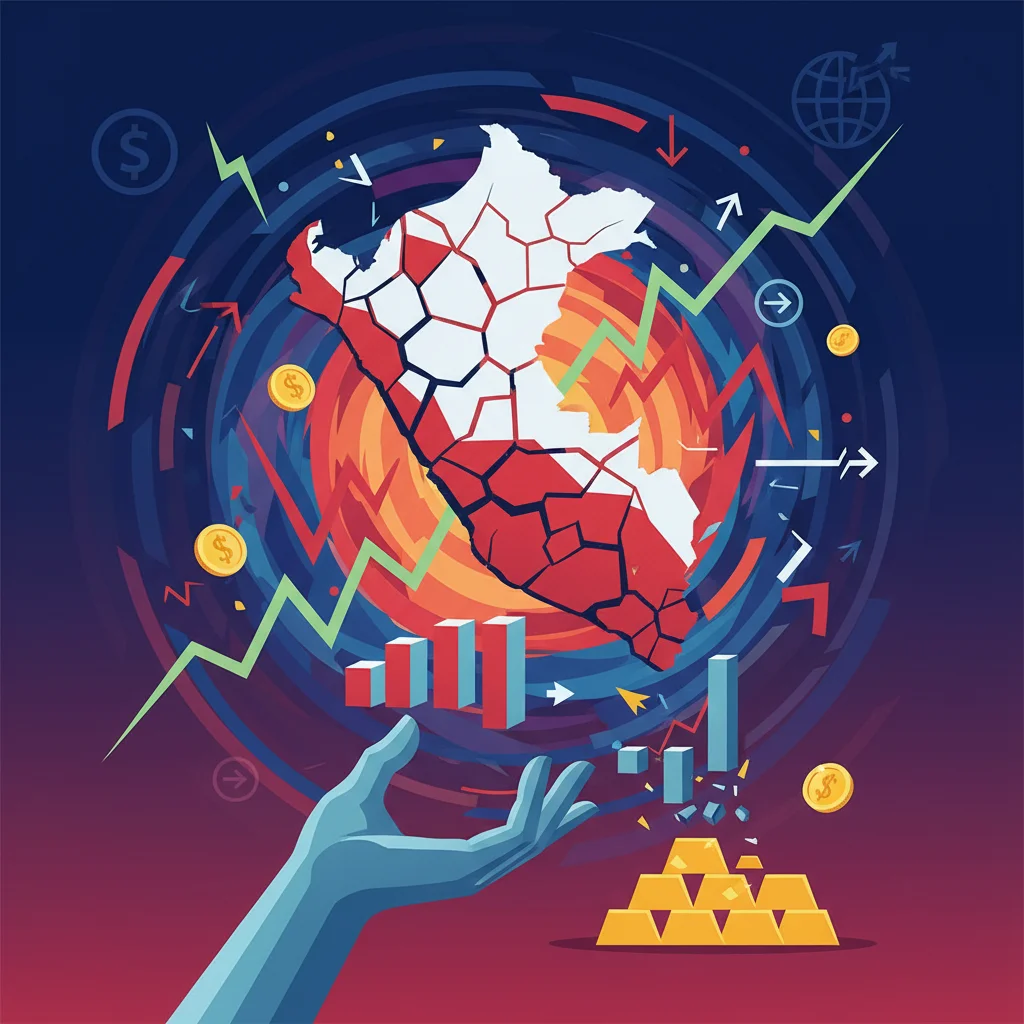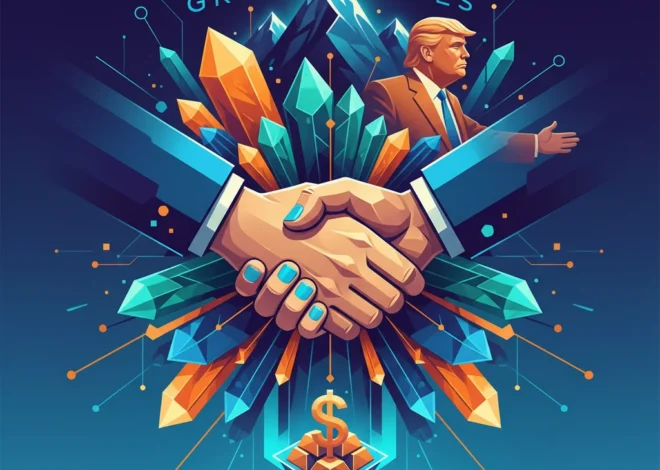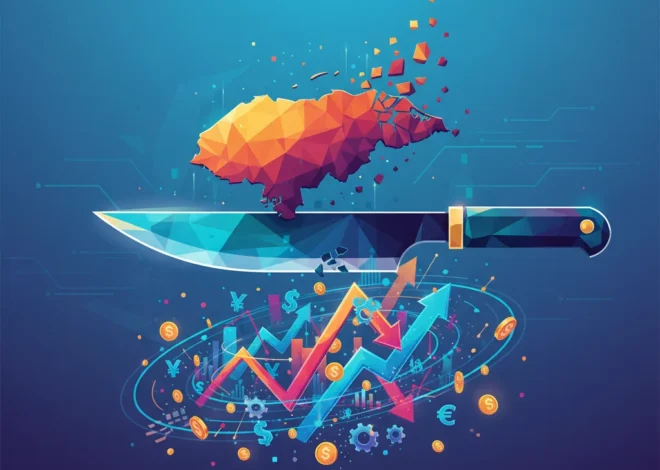
Peru’s Political Turmoil: Decoding the Economic Risk for Investors
A Nation on Edge: Why Peru’s Political Instability is a Major Red Flag for the Global Economy
In the world of emerging market investing, stability is the currency of confidence. Yet, in Peru, a country rich in copper and culture, that currency has been severely devalued. The nation has witnessed a staggering six presidents in just six years, a political revolving door that has left its economy teetering and its citizens, particularly the youth, seething with anger. The latest to take the helm is José Jerí, a leader tasked with an almost impossible mission: to restore order, fight rampant crime, and convince both a skeptical populace and wary international investors that he can outlast his predecessors.
For finance professionals, business leaders, and anyone with a stake in the global economy, the situation in Peru is more than just a distant headline. It’s a real-time case study in sovereign risk, a test of institutional resilience, and a stark reminder of how quickly political rot can erode economic progress. As Jerí navigates a landscape of “Generation Z” unrest and deep-seated institutional distrust, the implications for Peru’s stock market, banking sector, and long-term economic trajectory hang in the balance.
The Presidential Merry-Go-Round: A Chronicle of Instability
To grasp the depth of Peru’s current crisis, one must understand the sheer velocity of its leadership changes. This is not a slow-burning political disagreement; it is a rapid-fire succession of crises that has paralyzed policymaking and shattered public trust. The constant upheaval prevents any meaningful long-term planning, a critical component for stable economics and sustained growth.
The following table illustrates the dramatic leadership turnover that has defined Peru’s recent political history:
| President | Term of Office | Reason for Departure |
|---|---|---|
| Pedro Pablo Kuczynski | 2016 – 2018 | Resigned amid impeachment proceedings |
| Martín Vizcarra | 2018 – 2020 | Impeached and removed by Congress |
| Manuel Merino | Nov 10-15, 2020 | Resigned after 5 days due to mass protests |
| Francisco Sagasti | 2020 – 2021 | Interim president, completed the term |
| Pedro Castillo | 2021 – 2022 | Impeached and arrested after attempting to dissolve Congress |
| Dina Boluarte | 2022 – Present (with José Jerí as a key figure) | Facing ongoing protests and low approval ratings |
This level of churn is toxic for any economy. It creates a vacuum of leadership where crucial decisions on fiscal policy, infrastructure projects, and regulatory frameworks for sectors like financial technology are indefinitely postponed. For investors, this translates into profound uncertainty, making it nearly impossible to model risk or commit long-term capital.
The Unseen Threat to Your Portfolio: How Australian Superweeds Could Derail the Global Economy
Economic Tremors: From the Stock Market to the Streets
Political instability is never contained within the walls of government palaces; its shockwaves ripple through every facet of the economy. In Peru, the effects are palpable. The Lima Stock Exchange (BVL) has become a barometer of political anxiety, with indices reacting sharply to every rumor of a resignation or impeachment. This volatility makes trading a high-stakes gamble and deters the kind of stable, institutional investing needed to fuel growth.
Foreign Direct Investment (FDI), the lifeblood of many emerging economies, shies away from such chaos. International corporations planning to build mines, factories, or tech hubs look for predictable legal and political environments. When a country changes its leader more often than some people change their cars, that predictability vanishes. This capital flight, or even just capital hesitation, starves the local economy of jobs and innovation.
The banking sector also feels the strain. In times of crisis, the risk of credit defaults rises, and banks become more conservative with lending. This credit crunch stifles small and medium-sized enterprises, the primary drivers of employment. Furthermore, a generation losing faith in its government’s ability to manage the nation’s finances may begin to explore alternatives. While Peru’s fintech scene is still developing, prolonged instability could inadvertently accelerate interest in decentralized financial systems, such as those built on blockchain technology, as citizens seek to shield their assets from political whims and currency devaluation.
The “Generation Z” Uprising: A New Kind of Political Risk
The current wave of unrest is distinct from past political struggles. As the Financial Times article highlights, it is heavily driven by “Generation Z”—a digitally native, deeply skeptical, and highly organized cohort of young Peruvians. They are not just protesting a single leader; they are protesting a system they view as fundamentally broken and corrupt. Their grievances are not just political but also economic. They face a future of precarious employment, rising inequality, and a sense of being disenfranchised from the nation’s vast mineral wealth (source).
This generational factor presents a unique challenge for President Jerí and any future leader. Traditional methods of political negotiation may fail with a movement that is decentralized and communicates through social media. Their demands for systemic change are harder to meet than calls for a specific policy reversal. For the finance world, this means the risk is not just about who is in power, but about the very social contract between the state and its citizens. A government that cannot secure the buy-in of its youth cannot guarantee the long-term stability that underpins a healthy economy.
Beyond the Ceasefire: Gaza's Power Shift and the Economic Tremors for Investors
Jerí’s High-Wire Act: Can Security Pave the Way for Economic Stability?
Faced with this monumental challenge, José Jerí is focusing his efforts on a platform of law and order. His primary goal is to tackle the rampant crime that has become a daily torment for many Peruvians. The logic is clear: a safer country is a more stable country, which could, in turn, become a more investable country. By declaring a state of emergency in key districts, he aims to deliver tangible results that could restore a sliver of public confidence (source).
However, this strategy is a double-edged sword. A heavy-handed security approach could further alienate the very youth who are protesting against state overreach. Moreover, while fighting crime is essential, it does not address the core economic grievances fueling the unrest. Without a parallel strategy for job creation, educational reform, and anti-corruption measures that resonate with the younger generation, any gains from improved security may be short-lived.
Investors will be watching closely to see if Jerí’s administration can walk this tightrope. Can it restore security without sacrificing civil liberties? Can it pivot from crisis management to proactive economic policy? The answers will determine whether Peru can pull itself back from the brink or spiral further into a cycle of instability that will leave its stock market battered and its economic potential unrealized.
The Punk Rock Pivot: What a New Play Reveals About Fintech's Rebellion Against Traditional Finance
The Path Forward: A Litmus Test for Emerging Markets
Peru stands at a critical crossroads. The convergence of deep-seated political dysfunction and a generational demand for change has created one of the most complex challenges in modern Latin American economics. For President Jerí, the task is not merely to survive in office but to begin the long, arduous process of rebuilding institutional trust.
For the international community—from investors and bankers to policymakers—Peru is a crucial litmus test. Its fate will offer profound lessons on the interplay between social cohesion, political stability, and economic prosperity in the 21st century. The outcome will influence investment strategies, risk modeling, and the broader understanding of what it takes for an emerging market to truly emerge. The world is watching to see if Peru can find its footing, or if the revolving door of leadership will keep spinning, taking the nation’s economic future down with it.


